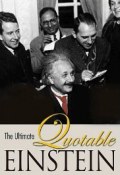TL:DR – Sciencebase has hosted an excellent chemistry dictionary for many years. You can download it here and use it with your word processor in spellchecking.
UPDATE: Version 3.0 of the chemistry dictionary is now available. Now, with crowd-sourced, user-submitted words and an OpenOffice.org dictionary extension.
“It took me the better part of a month,” Azman told us, “but I’ve made my own and I want it to be as open-source as possible. Sciencebase is now hosting Azman’s efforts ready for free download zipped chemical dictionary file here). The chemistry dictionary is in standard “.dic” format and instructions for installing it on Microsoft Word OpenOffice can be found in the download together with licensing information (it’s creative commons).

Azman concedes that it is not yet perfect and focuses mainly on organic chemistry words. “It almost certainly contains at least one error and misspelled word that sneaked through,” he confesses, “I tried to get as many of the conjugations as possible (-e, -es, -ed, -ing, -tion, etc), but probably missed several.” He also points out that it employs only US spellings.
“I don’t know how helpful it will be to an average chemist,” Azman told me, “but organic chemists should love it. From the organic perspective, I did not systematically go through and list every iterative derivative of every compound (methylbenzene, ethylbenzene, dimethylbenzene, fluorobenzene, etc.),” he adds, which could be something of a limitation compared to the paid for program which has 1,800,000 words compared to the 8000 or so entries in Azman’s dictionary. However, he did vet his list using the current ASAPs of JACS, JOC, and OL to catch some of the iterations he missed initially. “There are a surprising number of typos in those articles,” he points out.
Personally, I’ve had a medical dictionary running in my word processor for years, but this organic dictionary will complement that nicely and save me a lot of repeated add to dictionary clicks when writing around the subject of organic chemistry.
Azman is currently working on automating the iteration process with an Excel expert and as soon as that task is complete we’ll let you know so you can download the .dic file and install into your word processor.
Free Download: Chemistry Dictionary for Word/OpenOffice
Keywords: Open Access Chemistry Dictionary, Open Source Chemistry Dictionary, Microsoft Word Chemistry Dictionary, OpenOffice Chemical Dictionary.
This item originally appeared on my Chemspy site back in the 2000s and was first released on Sciencebase 2008-02-08 at 13h00 GMT.


 Six science books for the holiday season subjects as diverse as molecular biology pioneer Sydney Brenner, the question of antimatter, how scientists can better explain their research to non-scientists, a history of the chemical elements, scientific feuds and how innovators exploit business and technology trends.
Six science books for the holiday season subjects as diverse as molecular biology pioneer Sydney Brenner, the question of antimatter, how scientists can better explain their research to non-scientists, a history of the chemical elements, scientific feuds and how innovators exploit business and technology trends.